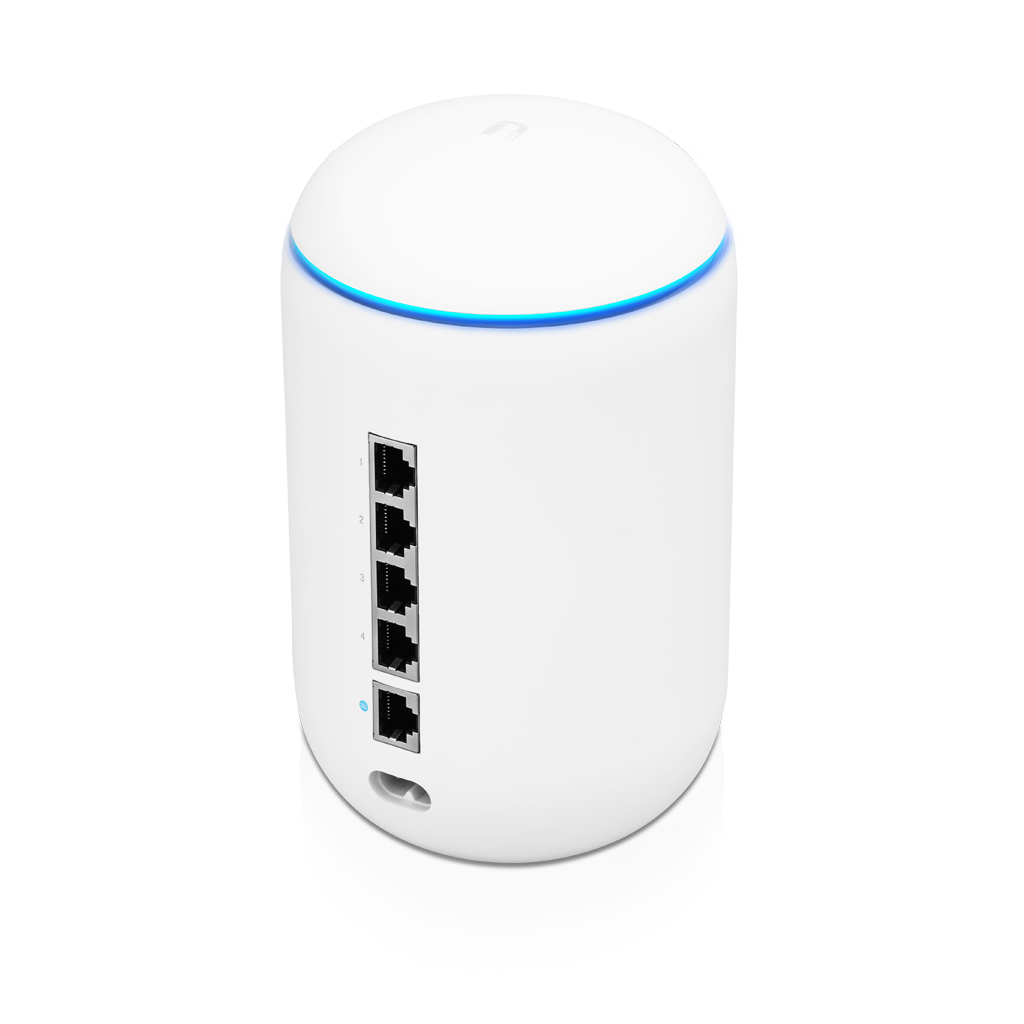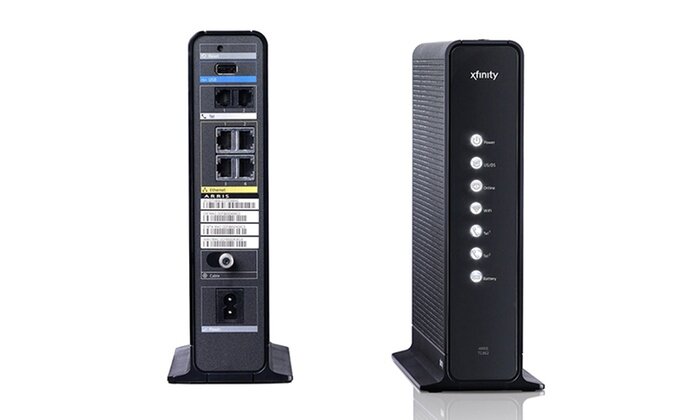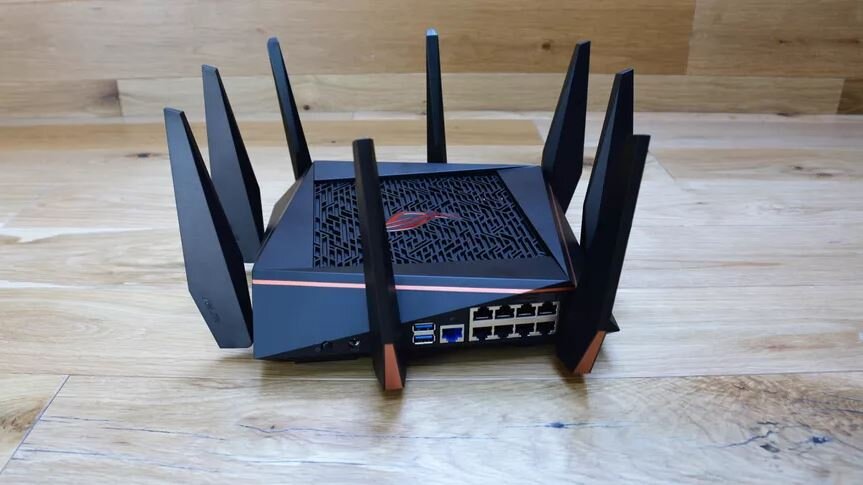Ubiquiti’s UniFi Dream Machine and Amplifi Alien Preview
Originally Posted: November 23rd, 2019
UniFi Dream Machine and Amplifi Alien Preview



Edit: I wrote this when the UniFi Dream Machine was just announced. If you want a more thorough review of the differences, read my full comparison of the UDM and AmpliFi Alien.
UniFi Starter Kit
If you’re tech savvy and want a better home network, Ubiquiti makes some of the best consumer networking equipment. They have two main product lines for consumers: AmpliFi and UniFi. AmpliFi focuses on easy to use mesh Wi-Fi systems, while UniFi offers a complete ecosystem for wired and wireless networks. For now, let’s focus on UniFi and the new UniFi Dream Machine (UDM).
You can think of the UDM as a UniFi starter kit. A UniFi network requires four components: router, switch, wireless access points and a controller. You pick which models, and how many of them, and assemble those parts into a network of your design.
This has advantages over a do-it-all modem/router combo you typically get from an ISP or big box retailer. You can expand and upgrade as needed, without replacing everything. The individual parts are better, especially if you go for the higher end models.
A properly designed UniFi network with multiple access points is always going to give you better results than even the best, most antenna packing all-in-ones or wireless mesh systems, Amplifi included. Before we dive further into the UDM, it’s helpful to know what UniFi is.
Diagram of a typical UniFi setup
Typical UniFi Setup
Routers:
They have two main options: the USG and the USG Pro. There is also the newer UDM-Pro, which I cover in depth here. If all you need is a basic router, the USG gets the job done. It can route at 1 Gbps, but the slow CPU will prevent you from using features like IDS/IPS or adding lots of firewall rules. The USG is over 5 years old and overdue for an update. The USG-Pro is a rackmount model, offering a big step up from the USG in performance while adding two 1 Gbps SFP ports. It is newer than the standard USG, but still is due for an update.
Another option is the UniFi Dream Machine Pro, which was released in early 2020. The UDM-Pro is not intended as a replacement for the USG or USG-Pro. It combines the new CPU from the UDM with a built in NVR for UniFi Protect (their video camera software) and a built in UniFi controller. The built-in controller is a key part of the UDM line, and makes it a bit different than the traditional USG or USG-Pro.
Switches:
They have many options, including some new ones. They just released their 2nd generation of switches which dramatically lower the fan noise of the previous models, and add a small touchscreen for viewing stats and other info. They also added a Pro tier, with nice-to-haves like SFP+ uplinks, and L3 routing promised in a future software update. They have models from 8 ports up to the new 2nd generation 48 port POE model. They also have the XG series if you need (or want) 10 Gbps ports. If you are concerned about fan noise, I recommend the 2nd generation switches. If you want the most POE you can get, look into the 1st generation. Just pick the number of ports you need and make sure you have enough POE budget.
Access Points:
| Model | AC-Lite | AC-LR | AC-Pro | HD | nanoHD | BeaconHD |
|---|---|---|---|---|---|---|
| Price | $89 | $109 | $149 | $349 | $179 | $129 |
| Wi-Fi Standard | ac |
ac | ac | ac Wave 2 | ac Wave 2 | ac Wave 2 |
| 2.4 GHz Speed (Mbps) | 300 | 450 | 450 | 800 | 300 | 300 |
| 2.4 GHz MIMO | 2x2 | 3x3 |
3x3 | 4x4 | 2x2 | 2x2 |
| 5 GHz Speed (Mbps) | 867 | 867 | 1300 | 1733 | 1733 | 1733 |
| 5 GHz MIMO | 2x2 |
2x2 | 3x3 | 4x4 | 4x4 | 4x4 |
| Gigabit ports | 1 | 1 | 2 | 2 | 1 | N/A |
| Antennas | 2 | 1 | 3 | 4 | 4 | 4 |
| POE | POE | POE | POE+ | POE+ | POE | N/A |
It’s easier to show a table. This isn’t even all of them. It’s also helpful to see the various UniFi AP generations. Keep in mind the AP in the UDM is equivalent to a nanoHD.
If you’re interested in more detail on the various access points and their differences, read my UniFi access point guide.
Controller:
The controller software is what ties it all together. The UniFi controller software gives you a web interface to configure everything. I’ve seen a lot of bad network software, and plenty of good — Ubiquiti’s NMS is one of the best out there for consumer gear.
Ubiquiti make little appliances called Cloud Keys that can run the software for you, or you can run the software on a server or VM. The controller software is only required for setup and monitoring, it doesn’t need to be running for the network to function. To get the full benefits of the UniFi system, you should definitely have an always available controller, no matter how it’s hosted. One good thing about the UDM is that it has a controller built-in.
The 1st generation Cloud Key is still for sale, but the 2nd generation is much better and faster. They also have the Cloud Key Gen 2+, which adds a 2.5” hard drive bay for use with UniFi Protect. If you want more details, read my more thorough overview of the UniFi ecosystem.
UniFi VS. UDM
The UniFi Dream Machine gives you everything you need for a UniFi system in one device.
It features a controller, router, switch and access point, making it a good way to get started. The router is far ahead of their current standalone USG and USG-Pro in performance, allowing for 850 Mbps IDS/IPS performances. The 4 port switch allows gigabit Ethernet connections to a few of your most important devices, or a way to attach a bigger switch for even more wired ports.
The 4x4 802.11ac wave 2 wireless access point is the equivalent to a nanoHD — a great access point that will cover small to medium sized houses and businesses. For even more wireless coverage, you can wire in any other UniFi AP, or add one of the new Beacon HD mesh APs.
While it has a lot of the benefits of UniFi, it also has some downsides. UDMs are not able to be adopted by external controllers, complicating things for people that want to deploy it at an external site. A lot of managed service providers deploy UniFi systems for customers (or parents), and manage them all centrally from one instance of the controller software. That isn’t possible with the UDM right now. The only way to manage multiple remote sites is through Ubquiti’s free cloud service.
Another downside is common to every all-in-one device, and makes the UDM a weird fit in the UniFi line: it’s an all-in-one. If you want to upgrade in a few years, you can’t just replace one part. In order to upgrade to Wi-Fi 6, you’d have to purchase everything again, or use an external AP. It makes the UDM kind of an awkward product, one that goes against a lot of the benefits that UniFi normally provides.
I still think the UDM is a compelling entry in the UniFi lineup, and serves its role well. If you want to piece together your own setup you still can. If you want an easy way in and don’t mind the trade offs, the UDM is for you.
Quick Note on Wi-Fi 6
One of the most disappointing things about the UDM and Ubiquiti’s products right now is their lack of 802.11ax AKA Wi-Fi 6. If you don’t know, Wi-Fi 6 is the newest standard, replacing 802.11ac (Wi-Fi 5). Wi-Fi 6 brings a lot of big improvements to how wireless networks work, and it’s what you should be looking to buy if you’re investing in new equipment. The lack of Wi-Fi 6 isn’t a deal breaker, 802.11ac Wave 2 is still plenty fast, but this is definitely one thing counting against the UDM going forward.
Enter the Amplifi Alien
This week, Ubiquiti released their first Wi-Fi 6 product, the Amplifi Alien. The Amplifi line focuses on mesh networking, allowing you to have multiple access points without the need to run Ethernet around your house. It accomplishes this by using wireless backhaul, which trades speed for simplicity.
Typically with a mesh system, you plug your Internet into the base unit and place the beacons around your house to extend coverage. The previous flagship Amplifi router, the HD, had one base unit and 2 beacons, just like a typical mesh system from Eero or D-Link. The Amplifi Alien only comes with one unit, and you’re expected to buy another base unit if you need to extend it into a mesh. The base unit itself costs $379. Multiply that times 2 or 3, and it makes the Amplifi Alien a very expensive proposition. They do offer a kit with one base station and one mesh node, but I haven’t seen the mesh node available separately.
If you’re looking for a dead-simple mesh system, the Eero Pro still is the one to beat. If you’re looking for Wi-Fi 6, the Amplifi Alien is the best that Ubiquiti offers right now.
Still Not What We Want
The upcoming UXG-Pro offers some hope, and the Amplifi Alien shows Ubiquiti is aware of Wi-Fi 6. The new products are nice, and they have their uses, but it’s still not what most UniFi fans want.
We want an updated USG (Edit 2/27/2020: it’s coming!) and Wi-Fi 6 capable UAPs (Edit 5/15/2020: They’re coming, too.) Until those products come, the UDM, UDM-Pro, and the aging UniFi line are the best we have.



